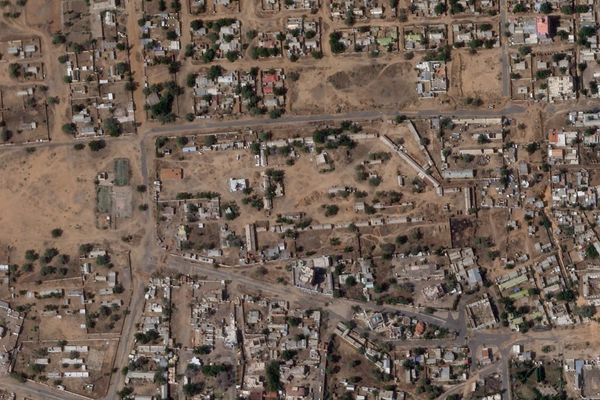
“Too old to be renting” is how Thomas, a 65-year-old Queenslander sums it up. He and his partner had been saving to buy a home before rent rises ate into much of their savings. “Home ownership opportunities have vanished,” he says.
A country that once considered home ownership a pillar of adult achievement is becoming a land of older renters.
The managing director of the Australian Housing and Urban Research Institute, Dr Michael Fotheringham, expects the Australian home ownership rate of 66% to fall to 63% by 2026, while research for Housing for the Aged Action Group found that the number of private renters aged over 55 increased by 73% between 2011 and 2021.
“Both of us are ageing,” says Thomas, “meaning all our available energy goes into work … There is no upside.”
Thomas is one of more than 160 people who answered a series of questions posed by Guardian Australia about readers’ experiences of the housing crisis and one of many older Australians struggling at a time when they hoped life would get easier.
While much has been written about young people being more affected than any other demographic, responses to Guardian Australia showed that close behind them is a quiet cohort whose retirement years are not being shaped by the accumulated wealth commonly associated with baby boomers, but by the mounting strain of unaffordable rents in the throes of a crisis that is being felt across generations around the world.
“Accessing a comfortable retirement assumes that you own your home outright and you don’t face rent or mortgage costs by the time you’re on a lower income,” says the head of research at Corelogic, Eliza Owen. In reality, there are now more than half a million people over 55 with low to moderate wealth and incomes living in private rentals or paying mortgages into retirement, according to a Swinburne University of Technology report funded by the Housing for the Aged Action Group.
“All of the assumptions around older people owning their own homes is increasingly not the case any more, and it has a flow-on effect to all areas of what it means to be ageing well in this country,” says the group’s executive officer, Fiona York.
John, a 64-year-old in Wagga Wagga, New South Wales pays 50% of his income to his landlord. The casual retail worker is no longer day tripping in his spare time or going out much with friends.
“I am watching every dollar I spend – something I never had to do three years ago,” he says. “I find myself doing the sums in my head continuously when it comes to regular bills. I am learning to do without when it comes to discretionary spending … If I had a major expense come up unexpectedly, I would be stuck. There is a lot of finger crossing going on.”
The aged pension ‘barely covers rent’
One of the myriad and entangled effects of the crisis is the rise in numbers of “forever” renters.
“Although most renters would prefer to go into home ownership, the majority believe they never will – and the sad reality is that many of them are right,” says Fotheringham, citing AHURI data that shows only half of renters expect to own a home in their lifetime, despite 80% wanting to. The experts Guardian Australia spoke to said the principle of renting in perpetuity makes a lot of sense – they look to Germany as a working example – but it cannot exist without fair and robust housing and tax systems.
Despite rising rents, the data suggests the insecurity baked into the private rental system is at least as detrimental as its cost: renters are willing to pay more for rent protection, property maintenance above minimum standards and the ability to extend their lease indefinitely.
“How do we actually fix our rental system so [rental homes are] not designed around this transitional idea?” Fotheringham asks. “Rental systems in Australia and tax settings surrounding property investment are really a lot better at sheltering and growing our money than they are at sheltering and growing our families.”
Facing diminished income and rising costs, older renters face a problem that is beginning to unravel the way pensions and superannuation work, he says. Multiple readers told us the aged pension – now $1,144.40 a fortnight – barely covers rent.
It’s the “missing middle”– those whose savings aren’t enough to buy a home yet are too much to access housing assistance – who have the fewest options, York says. Given that banks will usually not lend to older people, even those with up to $500,000 can no longer afford to buy.
The independent living movement and federally regulated retirement villages of the 1980s no longer exist, while the affordable housing the government is promoting, such as the Housing Australia Future Fund, York says, is not truly affordable for those on low incomes and pensions because it remains between 90% and 75% of the market rate. Truly cooperative housing pilots are promising, but still very much in their infancy. Many of the calls for assistance her team fields – the number of which have risen by 40% this year – don’t have complex needs: “All they really need is affordable housing.”
‘Renting is at odds with ageing’
Housemates might be a term we associate with the footloose and fancy free, but a number of readers told us they are pooling resources and entering share houses in their 50s, 60s and even 70s.
One Sydney aged pensioner approaching 80 has just been forced to take on a housemate because his rent continues to rise. A 57-year-old full-time worker, also in Sydney, has just moved in with a friend. A 68-year-old in regional NSW says house sharing is a “mixed bag” that he’d avoid if he could afford to. As York puts it, “Nobody wants to be in share housing when they’re in their late 70s, but that’s what they’re having to do.”
Joelle Moore, a University of Queensland PhD candidate is researching renters aged over 55. What she has found so far, she says, is “flabbergasting”: about half of her interviewees facing housing precarity have had careers as lawyers, pharmacists, nurses and academics and imagined retirement would be the “good years” of their lives. “It’s not the stereotype of what people would expect for those on the brink of homelessness,” she says.
Her refrain is constant: renters need rights, tenure security and affordability. They also need renting to lose its stigma. She has met older people who won’t tell their friends that they’re renting because “they’re all talking about their holiday homes, and there’s definitely a sense of failure”. But key to her findings is that community connection is as, if not more, important than a place to call home. When she asks older renters when they felt most at home, “it was always when they had a community”.
Renters are more exposed to forced moves than homeowners and their stresses only become more taxing, mentally and physically, with age and frailty.
“As people age, they want more stability and more certainty – and peace and quiet, somewhere to lay their hat, so to speak,” Moore says. “And I would argue that a tenure which is insecure, like private renting, is at odds with ageing.”
Without rental caps, renters’ protection, tax overhaul, strong minimum building standards and investment in affordable housing – essentially, as long as housing is considered an investment and not a fully protected human right, York says, that certainty is unlikely any time soon.
House sitting and moves overseas
Because the private rental market serves as the main buffer between home ownership and insecure housing, Owen says it is “disastrous” for older people relying on a market that is at the mercy of investors and economic flux. For some, the buffer has imploded.
Researchers draw a direct line from rental costs to homelessness, with older women acutely vulnerable. In 2021 38% of the almost 54,000 women recorded as homeless – which includes living in cars, on couches and in refuges – were aged over 55. Those estimates are believed to be extremely conservative but experts agree that all homeless women are at high risk of negative health effects, exposure to violence, exploitation and property theft.
One, 54, had surrendered her cats and was now living in her car, which she parks in public parks with 24-hour toilets. Another, a full-time worker aged 58, said that she was dreading the moment her landlord decided to sell as she may be forced to live in her car. One octogenarian had prepared a tiny caravan he and his “lady companion” will resort to if his lease is not renewed.
People told the Guardian about house-sitting, pet-sitting, odd jobs and moves overseas. Jeffrey, 67, moved to Bondi from South Africa in 1996 and is now considering his options, given that he and his partner’s rent for a modest two-bedroom flat has risen to $870 a week. He is rethinking plans to retire at the end of the year, has cut expenditure on food and reduced private health and life insurance to basic coverage.
He’s also researching moving to countries where their savings will stretch further and that, he believes, are geared towards older people: Panama, Costa Rica or, most likely, Mauritius.
“They like retirees there,” he says. “Why not look outside the box?”
– Some names have been changed







